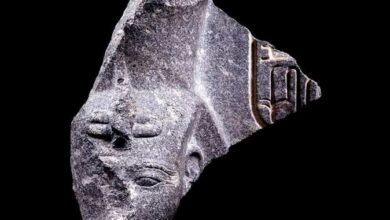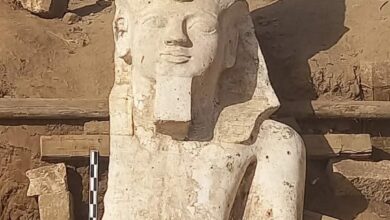
Every year, Egypt and the entire world celebrate the sun’s illumination of the sanctuary of King Ramses II at the Abu Simple temple, with the Aswan Governorate and the Ministry of Antiquities and Tourism inviting Egyptians and foreigners to celebrate the event on February 22 and October 22 every year.
However, I call upon Khaled al-Anani, the Minister of Tourism and Antiquities, to also hold a celebration in front of the Sphinx three times a year – two celebrations on March 21-22 and on September 21-22, i.e. in the spring and autumn, during what is called the equinox, when night and daylight hours become equal.
I celebrated these occasions for five years.
On one day at sunset, the sun falls directly on the right shoulder of the Sphinx. During the summer, the sun begins to move to the north and in the winter it moves to the south.
This is a fascinating scene. During these occasions, from 1995 to 2000, I used to invite journalists each year to celebrate and record the astronomical phenomenon, which was broadcast on Egyptian and foreign TV channels and written about in press outlets all over the world.
Unfortunately, these celebrations did not continue even though they could have a stronger impact on tourism than the phenomenon of the sun illuminating the sanctuary of Ramses II Temple in Abu Simbel.
There is also another phenomenon that is even more attractive and has the potential to bring global attention to Egypt – on June 21-22, the sun sets between the Pyramid of Khufu and the Pyramid of Khafre, in an event called the solstice.
These astronomical phenomena help to bring great media coverage to Egypt, and the country could even hold sound and light shows three times a year on March 21-22, September 21-22, and on June 21-22.
The Pyramids are admired everywhere in the world, and history and science lovers from around the globe are sure to travel to witness this unique phenomenon, which will help encourage tourism through local and global media coverage highlighting Egypt’s tourist attractions.
I wrote about these phenomena in my last book, which was published in English and German in cooperation with my friend, archaeologist Mark Lehner, who has worked with me on the Pyramids for more than 50 years and has also taken part in some of these celebrations at the Sphinx.
I think now is the opportunity for the Ministry of Tourism to benefit from these phenomena again, which I explained in detail in my last book, the fourth part of an encyclopedia on the pyramids, published by Nahdet Misr. It is the first encyclopedia in the Arabic language that chronicles the era of the pyramids in detail.
In the book, I cover the most important recent discoveries that occurred in the pyramids region, as well as all the recent opinions and articles published on the pyramids. There is only one other book on the pyramids in Arabic, which was written by the late Ahmed Fakhry.
This book does not have any recent information on the pyramids, their construction, or recent discoveries at the pyramid of Khufu, however, and it also leaves out the Wadi Al-Jarf papyri, which gave us, for the first time, information about the construction of the pyramids through the diary of “Merer,” a previously unknown official who led workers at the time.
Will we celebrate the sun falling on the shoulder of the Sphinx twice a year and its setting between the horizon of Khufu and Khafre? This is a question directed to my friend Khaled al-Anani.
Edited translation from Al-Masry Al-Youm




